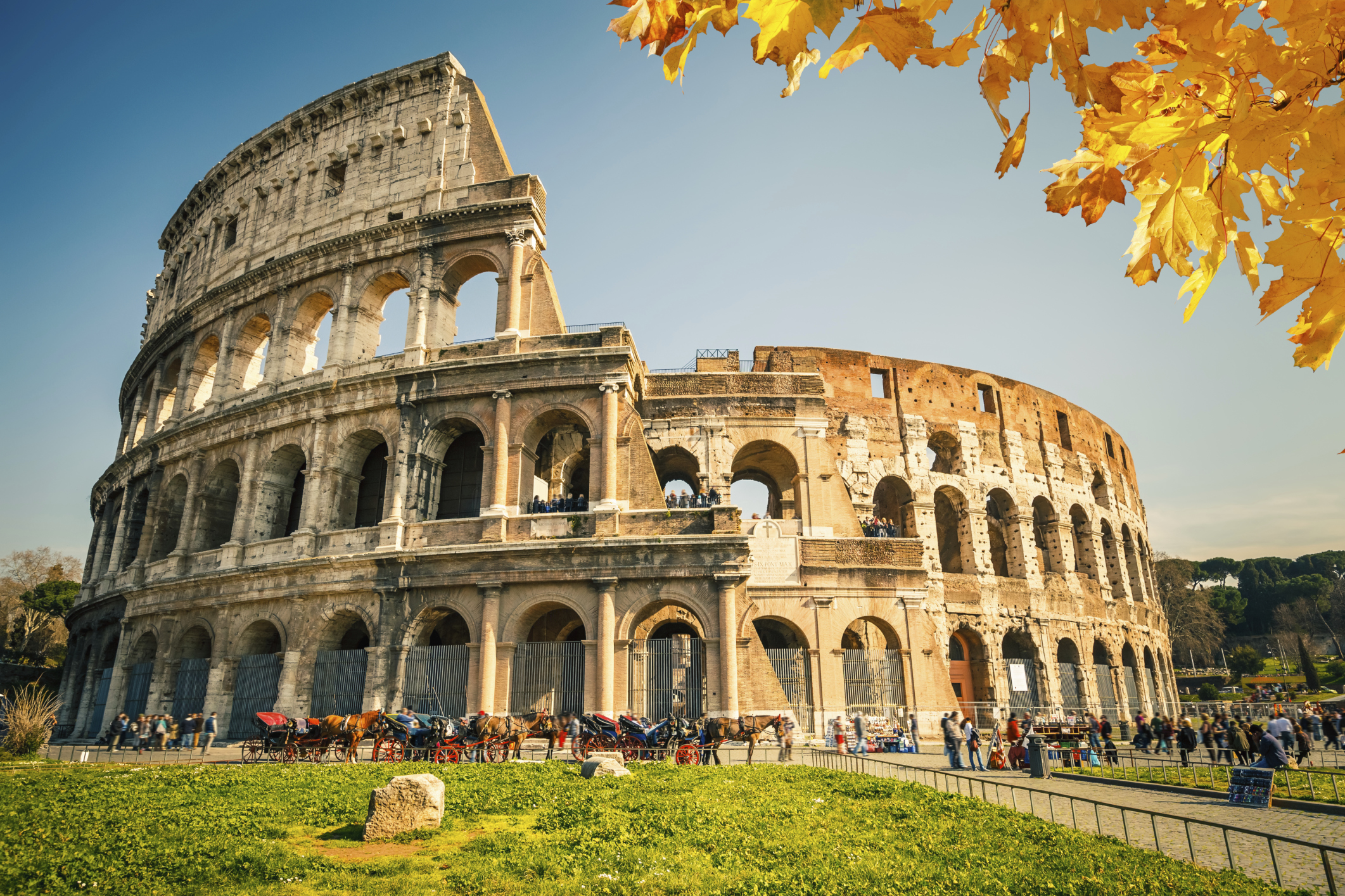


When picturing Rome, the mind naturally conjures up images of scooters hurtling down narrow streets, and bustling cafes carrying thick aromas. Dubbed the eternal city, the Italian capital is a hotbed of cultural and historical heritage. There’s plenty to do in Rome, from iconic landmarks to a plethora of museums. Below are three highlights, but to learn more about this incredible city please contact your personal travel manager.
The Colosseum is the largest amphitheater in the world, with a diameter of 190 metres. The arena built in 81 AD by 60,000 slaves is a lasting tribute to the Roman civilisation. The 45,000-seat stadium was a focal point of Ancient Rome, using 100,000 cubic metres of marble over three stories.
The Colosseum, which derives its name from the statue of Colossus, is one of Rome’s most iconic landmarks and attracts millions of tourists each year. Guided tours of the upper tier and underground tunnels are available for an extra fee.
400,000 people died in the Colosseum’s gladiatorial exhibitions, and the structure became synonymous with savagery as a result. The stadium has hosted several demonstrations against capital punishment and became illuminated in gold when the death penalty was abolished in New Mexico.
Along with the Colossuem, the Pantheon is another historic landmark. The temple dates from 120 AD, but was consecrated as a Christian Church in 608 AD and avoided neglect as a result.
The fascination in the Pantheon lies not only in the building’s historical significance, but also in its architectural significance. The unreinforced concrete dome remains the largest in the world and is considered a pinnacle of Roman engineering. The 16 columns that border the temple’s porch are 12 metres high, weighing 60 tons and carved from individual pieces of stone. Impressively the stone was quarried in Egypt and shipped across the Mediterranean and up the Tiber.
The Pantheon contains several tombs, including that of Renaissance painter Raphael. Other notable Italians buried at the Pantheon include Victor Emmanuel II, the first king of a united Italy since the 6th century, and his successor Umberto. Entrance to the temple is free, but you shouldn’t need more than 30 minutes.
Every week a congregation of several thousand gathers in St Peter’s Square to hear The Pope give mass. For non-believers, the Vatican City holds deep cultural significance, but for believers visiting the Vatican is a spiritual experience. The papacy traces its heritage back to St Peter, who is buried under the Basilica.
St Peter’s Basilica was erected in 1626 and designed by masters of the Renaissance, including Donato Bramante and Michelangelo. The church is one of the largest in the world and one of four major basilicas, with a capacity of 60,000. Mosaics commonly mistaken for paintings lavishly adorn the interior, the most famous being ‘Navicella’ from the 17th century. Notable relics inside the church include Michelangelo’s Pieta and Bernini’s Baldacchino; the latter is 96 feet tall and contains 100,000 pounds of bronze.
Nearly 4,000,000 people visit the Basilica each year, with staff strictly enforcing a dresscode that excludes short skirts and plunging necklines.
The major sights of Rome are within walking distance of each other and consequently walking is the best mode of transport. Other than walking, cycling is a good way of getting around, with cycle lanes intersecting the city centre.
The subway is useful for travelling larger distances, with fares from as little as €1.
Find out more from your local, personal travel manager. Visit http://www.travelmanagers.com.au/ptm-search/